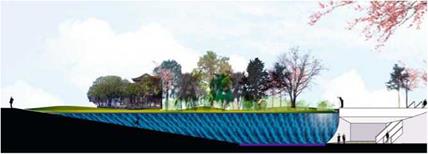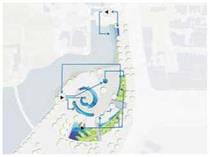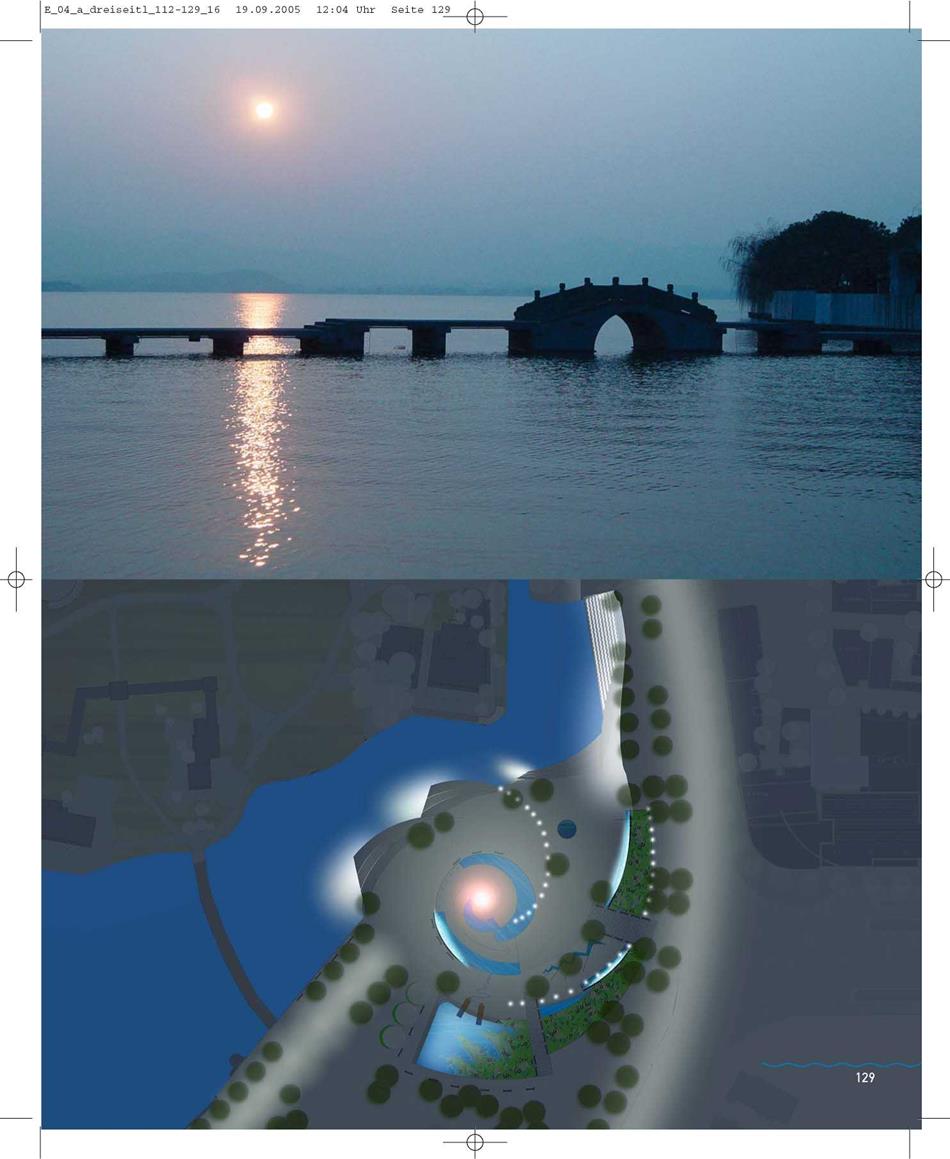![]()

![]()

The enormous economic expansion and construction boom in China holds the world in suspense. The dimension and tempo of the boom are hard to rival by any western metropolis. When working with the Chinese, one encounters inner values which trigger surprising and unusual lines of questioning for occidentals. Water is valued in China, and respected not only in ‘Feng Shui’ Water has great symbolic power which is deep seated in traditional value systems – values which are worth transporting to the modern world of today.
Situated on the upper reaches of the Yangtze Delta only 180 kilometres from Shanghai, Hangzhou is the capital of the Zhejiang province. The Hangzhou district has a population of over 6 million, the city itself is over 1.7 million strong and growing fast. The city government is trying in many areas and projects to preserve and renew traditional urban culture and structures while meeting the needs of a demanding, expanding modern city.
In every season, the West Lake is the jewel of Hangzhou, and offers romance and mysticism to the delight of its visitors. Yet the quantity of tourists and
the demands of agricultural, industrial and domestic outfall have noticeably influenced the water quality of the lake for the worse.
Impressed by the success of Xintiandi in Shanghai (a shopping/restaurant centre tastefully built in modern renovated traditional Chinese architecture), the City of Hangzhou invited the same developers, Shui On Properties, to tackle a large site right on the lake front. The three phase project includes a romantic park island, an urban shopping village and a citizens water plaza. Together with Architects Wood + Zapata and civil engineers Ove Arup, Atelier Dreiseitl developed water concepts for all three phases of the project and in particular the citizens water plaza, called the Pearl of Hangzhou Water Garden.
In Phase 1, the park island, the rainwater concept is to collect run-off from the roofs and use it for irrigation of the park and toilet flushing in the amenities. The whole of Phase 2, the urban shopping village, is pedestrian. Water is collected from the pedestrian streets and roofs and used to supplement water cascades and walls, which are conceived to greatly improve
the indoor/outdoor climate comfort of the village. The remaining rainwater is stored to be used for cleaning the pedestrian streets, which due to expected visitor numbers will be washed down up to twice a day. A dramatic water cascade shimmers in the light and draws visitors through an underground pedestrian passage to the West Lake and to the Pearl of Hangzhou water garden. This is a landscape of play and stimulation of the senses. At the centre of a dynamic spiral, a ‘pearl’ sprays cooling water during the day and glows with sensual colours during the night. A demonstration fountain extracts dirty water from the West Lake, circulates it through cleansing biotopes before returning it to the lake, showing a green technology which could be used on a greater scale to improve the quality of the lake.
The implementation of the project is dependant on a complex net of political considerations. Great respect is due to the city which is seeking to balance through this outstanding project the economic prosperity of its businesses with real quality of life for its citizen.
![]()
|



![]()
|
|
![]()




